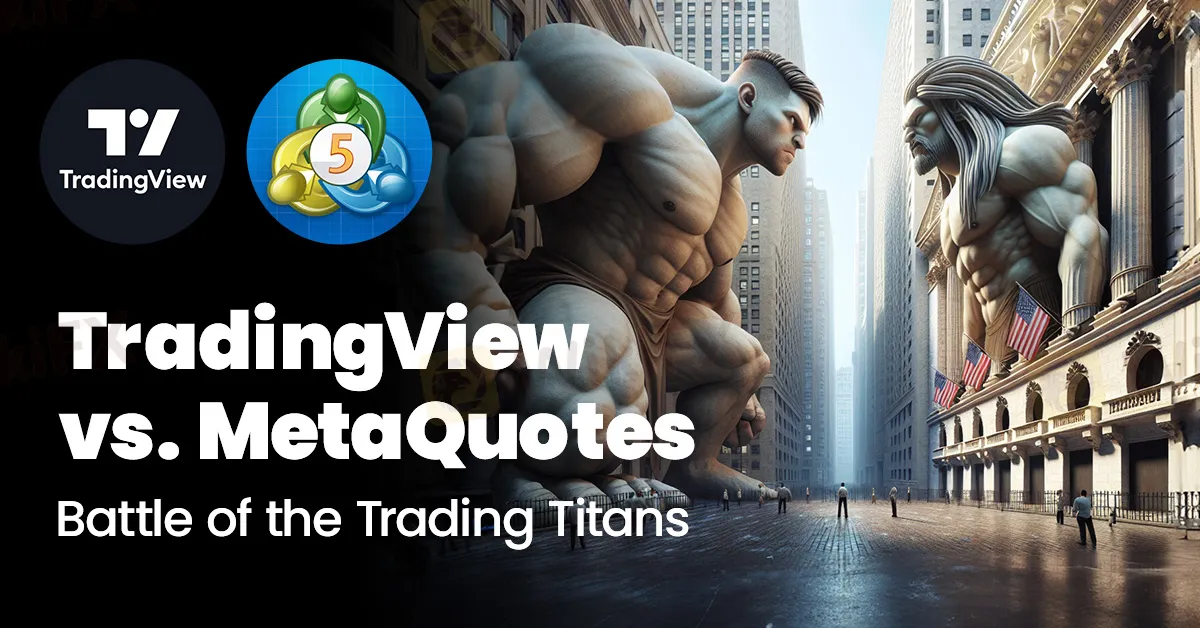简体中文
繁體中文
English
Pусский
日本語
ภาษาไทย
Tiếng Việt
Bahasa Indonesia
Español
हिन्दी
Filippiiniläinen
Français
Deutsch
Português
Türkçe
한국어
العربية
TradingView vs. MetaQuotes | Battle of the Trading Titans
Abstract:Among the plethora of trading platforms available, two giants stand out: TradingView and MetaQuotes. How does a trader choose between these two titans?

In the realm of forex and cryptocurrency trading, selecting the appropriate trading platform is a critical decision for traders seeking success in the fast-paced environment. Among the array of platforms available, two prominent contenders have emerged: TradingView and MetaQuotes. These platforms have distinct features and cater to diverse trading needs, prompting traders to contemplate which one best suits their requirements.
TradingView has garnered a significant following among traders due to its user-friendly interface, robust charting tools, and extensive library of technical indicators. Utilizing a cloud-based platform, TradingView offers traders the flexibility to access charts and analysis from any internet-connected device. Moreover, the platform fosters collaboration and learning through its vibrant community, enabling traders to share insights, strategies, and analyses.
Contrastingly, MetaQuotes has established itself as a cornerstone in the forex and cryptocurrency trading industry, primarily through its flagship platforms, MetaTrader 4 (MT4) and MetaTrader 5 (MT5). Renowned for their reliability and stability, MetaQuotes platforms offer a plethora of features, including automated trading capabilities facilitated by expert advisors (EAs), customizable charting tools, and an integrated marketplace for trading signals and indicators.

The decision between TradingView and MetaQuotes hinges on various factors, including individual preferences and trading styles. TradingView appeals to traders valuing community interaction and intuitive interfaces, with its extensive array of technical tools catering to those reliant on technical analysis. Conversely, MetaQuotes platforms are favoured by traders seeking advanced charting functionalities and automated trading options, particularly beneficial for algorithmic traders utilizing EAs.
It is noteworthy that both TradingView and MetaQuotes provide free demo accounts, enabling traders to test the platforms and assess their compatibility with their trading strategies before committing to live accounts. Additionally, many brokerage firms offer both TradingView and MetaQuotes platforms, affording traders the flexibility to switch between the two as necessary.
In conclusion, the selection of a trading platform plays a pivotal role in a trader's journey in the forex and cryptocurrency markets. By meticulously evaluating the strengths and weaknesses of TradingView and MetaQuotes, traders can make informed decisions aligned with their trading objectives and preferences, thus maximizing their chances of success in the dynamic trading landscape.

Disclaimer:
The views in this article only represent the author's personal views, and do not constitute investment advice on this platform. This platform does not guarantee the accuracy, completeness and timeliness of the information in the article, and will not be liable for any loss caused by the use of or reliance on the information in the article.
Read more

HTFX Spreads Joy During Eid Charity Event in Jakarta
On March 14, HTFX showcased its deep commitment to social responsibility by hosting a heartwarming Eid charity event in Jakarta, Indonesia. This meaningful gathering aimed to convey warmth and care through practical actions, uniting the local community and making a significant impact on those in need.

Exposing the Top 5 Scam Brokers of March 2025: A Closer Look by WikiFX
In its latest report for March 2025, WikiFX has released a cautionary ranking of brokers that have raised significant red flags within the trading community. These five platforms, marked by alarmingly low scores, serve as stark reminders of the importance of due diligence when selecting a broker. Below is an in-depth look at each one.

The Ultimate Guide to Automated Forex Trading in 2025
Modern markets are revolutionized by automated trading systems, which now execute 70-85% of all transactions. These advanced automated trading software solutions, commonly called trading robots or Expert Advisors (EAs), leverage algorithmic precision for automatic trading across forex, stocks, and commodities 24/7. By removing emotional interference and executing trades in microseconds, auto forex trading platforms create fair opportunities for all market participants. For those new to automated trading for beginners, these systems provide disciplined, backtested strategies while significantly reducing manual effort.

Will natural disasters have an impact on the forex market?
The forex market is known for its rapid responses to global events, but the influence of natural disasters, such as earthquakes and typhoons, can be less straightforward. While headlines may scream about catastrophic damage and economic disruption, the long-term effects on currency values often depend on a blend of immediate shock and underlying economic fundamentals.
WikiFX Broker
Latest News
How Crypto Trading Transforms FX and CFD Brokerage Industry
FCA Warns Against 10 Unlicensed or Clone Firms
CySEC Warns Against 14 Unlicensed Investment Websites
Top Currency Pairs to Watch for Profit This Week - March 31, 2025
Will natural disasters have an impact on the forex market?
Philippines Deports 29 Indonesians Linked to Online Scam Syndicate in Manila
Exposing the Top 5 Scam Brokers of March 2025: A Closer Look by WikiFX
Exposed: Deceptive World of Fake Trading Gurus – Don’t Get Fooled!
AI-Powered Strategies to Improve Profits in Forex Trading
Stock Market Trading Volume Drops by 97.58 Billion Naira This Month
Currency Calculator







